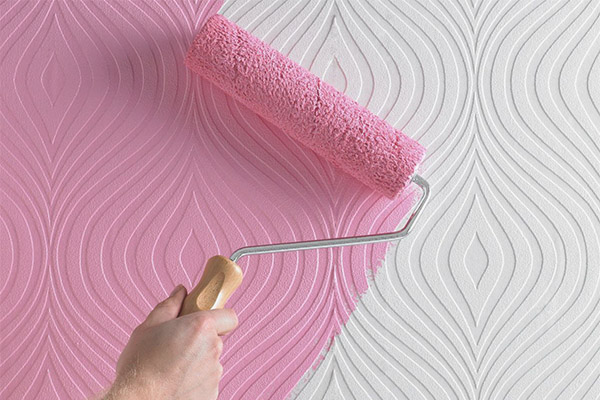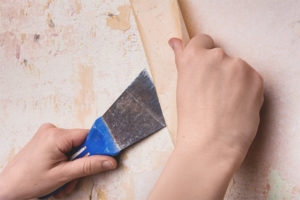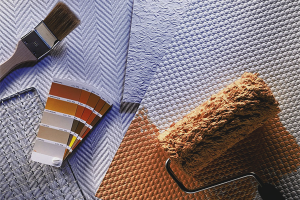The content of the article
Regardless of what interior design is chosen for the design of living space, the main role will always be played by the walls of the room. This is justified by the fact that they act not only as a background, but also set the nature of the design. Based on the appearance of the wall, further appropriate design elements are selected, such as textiles, flooring, furniture, and other decorative solutions are thought out.
To date, in any construction store, consumers are offered a fairly large assortment to select the appropriate option and materials for decorating the walls. A large role in the choice of finishing material for the wall is played primarily by the personal preferences of the consumer, the features and area of the walls that need to be decorated, as well as the specificity of the room where the repairs will be carried out.And, of course, the financial component of the whole process is necessarily taken into account.
In fact, the criteria by which a particular material is selected may be many. The choice should be made based solely on individual preferences. However, wallpaper for painting has indisputable advantages relative to other types - they are glued quite simply, and the process itself does not take much time. Due to such simplicity in the decoration of the walls, the pasting of the room can be performed within a couple of days - this is very convenient compared to other materials.
Due to the wide range, you can choose any interesting shade or pattern of the canvas, as well as texture and texture. In addition, it is possible to choose such wallpaper for painting, which have a number of additional properties, for example, they can be moisture resistant or washable.
You can easily combine different types of such wallpaper when you design in the same room. If necessary, they are quite simply perekleivayutsya - this can be done both with the aim of updating the appearance, and for a radical change in design.The main advantage of wallpaper for painting is that the selection of colors and patterns is not difficult.
Types of wallpaper for painting
Among most people there is a perception that there are no particular differences between the wallpapers intended for painting, and that they are all almost the same. In fact, this is far from the case, since they all differ among themselves in various factors and properties. The main types of this finishing material for the walls, there are three options, all of them have their own specific advantages and disadvantages, starting from which there is, in fact, the selection of wallpapers necessary for painting.
Wallpaper for painting from paper
This option of finishing materials for walls is the most common and is the widest segment of this group of materials. The variety of the assortment is quite large, and thanks to the huge demand, this type of wallpaper can be found absolutely everywhere where building materials are sold, both in a large hypermarket and in a small hardware store. Such unprecedented popularity of paper wallpaper for painting due to the fact that it is incredibly easy to work with them, they do not require a large investment of time and effort on pasting.Give the room an attractive appearance literally within a matter of days. Such wallpapers are well suited in cases where there is a need to disguise any minor defects or damage in the form of small cracks, scratches and even shallow hollows on the wall to be glued.
However, if the wall is too freaked and defective, has significant gouges and cracks, the use of paper wallpaper will be extremely impractical because they will not stick well on such a surface, and even if they stick securely, they will not hide, but on the contrary - they will expressly emphasize all the existing flaws walls.
Decorating the walls with paper wallpaper for painting is most often used for the design of a living room or a children's room, in some cases such wallpaper is glued in the kitchen. However, when choosing such a material for a kitchen room, it is necessary to pay special attention to its properties. The fact is that the kitchen is a rather specific room, since temperature drops there often occur and partial contamination of the wallpaper with fats and other fumes that occur during the cooking process is possible.Therefore, to ensure that the life of such wallpaper in the kitchen is the highest possible, for finishing, you should use wallpaper with a water-repellent layer, which prevents the appearance of a negative reaction to moisture. Due to the dense base and special surface coating of this material, it can be repeatedly painted, changing the shades of paint.
Repainting is mainly used to update the interior of the room in the case when the old shade has become boring. Perform redecoration in the room where there are wallpapers for painting on the walls, to do much cheaper because it reduces the additional cost of finishing material. All that is needed is to simply pick a new shade you like and repaint the walls.
Also popular are wallpapers that have a spectacular texture and conspicuous relief, thanks to which a beautiful imitation of decorative plaster is created, without a huge expenditure of effort and money. With the help of paper coloring wallpaper it is possible to design not only walls, but also ceilings, since this process is not very expensive and is implemented quite quickly.Pasting an area equal to a standard room in an apartment will take no more than three or four hours if several people are involved in this at once.
Fleisilina Painting Wallpapers
In addition to paper, not less popular are fleisilinovye wallpaper. The difference of this finishing material from paper wallpaper lies in the texture and the way in which it is made. The production of flasilin wallpaper for painting is the pressing of three or more wallpaper fabrics with each other. Foamed materials are most often applied to the upper face layer, which later, after pasting, will manifest themselves as texture and give volume to the pattern of wallpaper on the wall. Fleisilinovye wallpaper are characterized by increased strength, which is available due to the applied special top layer, and that is why they won love among a large number of buyers.
This type of finishing material is most often used during the design of the premises of new, newly built houses. This is justified by the fact that new homes still undergo a shrinkage process for a long period of time, during which slight wall shifts are possible.So, on these wallpapers, these changes do not have any negative impact, they are not damaged, are not deformed and endure the shrinking process absolutely calmly, without external changes.
If there are minor defects on the walls, this finishing material will wonderfully help to hide them. Its advantage lies in the fact that it is quite easily applied to the wall and is also easily removed from it, regardless of the period of stay on the surface, if necessary, re-gluing the material. In order to remove flesilinovye wallpaper from the walls, it is necessary with a trowel to pry the strip from one edge and then it will move away independently, without the use of additional means and efforts, from the surface with a whole strip. Such wallpapers can be repeatedly repainted in completely different shades, without the need for matching similar colors. There are several ways of applying paint to wallpapers, depending on what end result you need to achieve.
Quite popular today is the method of applying paint not on the front side of the wallpaper strip, but on the inside, with which it will be glued to the surface.This is justified by the heterogeneity of the wallpaper, which can be enlightened in some places. Thus, the internal coloring of the wallpaper allows you to achieve smooth transitions of colors, from more saturated to less bright and muted, and almost pastel. The second method that is in demand is spot staining with a sponge, which is soaked in paint and applied to the surface. The wallpaper before the dotted application can be painted in any color for the background, or left white. The application of paint with a sponge is carried out with the help of light stroke movements, in most cases the relief part of the wallpaper is painted to highlight the pattern.
In addition to the advantages, non-woven wallpapers for painting have some drawbacks, which include the top layer of foam material, because it is incredibly easy to damage. Consequently, the use of this finishing material in such rooms as a nursery or hallway, would be extremely impractical. If you use flasilin wallpaper as a finishing material for such rooms, care must be taken to protect the surface from damage.To do this, you can use wooden or plastic panels that are mounted on the bottom of the walls. In addition to damage, this material quickly fade due to exposure to sunlight. Accordingly, when choosing a shade for painting wallpapers intended for rooms with abundant sunshine, it is necessary to give preference to lighter colors that will be less fadeable.
Glass wallpaper
Glass wallpaper is a rather interesting material, since their production is a yarn of limestone fiber, quartz sand and dolomite. This type of wallpaper has its own specific advantages and disadvantages.
Choosing glass-wallpaper as a finishing material, it is necessary to consult with a specialist during the purchase of the material, since at home he has a slightly different story than he was presented during the sale. Such a change in the behavior of the material is explained by the so-called "loose threads", which are used in wallpaper. Their application to the wallpaper during fabrication can be carried out using pressure, which ultimately looks on the surface of the material as a “fluffy” and volumetric texture.However, it can disappear incredibly quickly after the first contact with a spatula in the process of pasting walls.
Also, choosing such a material for painting, you should avoid overly dense and thick wallpaper, because this directly indicates that during manufacture the manufacturer went too far with special impregnation. If the content of such an impregnation in glass-wallpaper is quite large, then there is a probability that when pasting the wrinkling of the wallpaper texture will occur, as a result, it will lose its expressive appearance.
Video: how to glue wallpaper for painting












To send